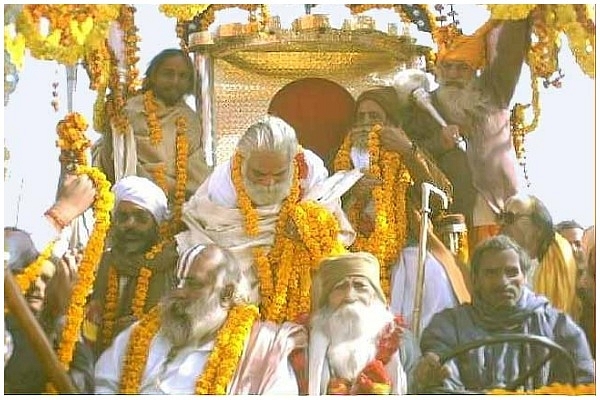News Brief
In Brief: What You Need To Know About The 2010 Allahabad High Court Judgement On The Ram Janmabhoomi Case

The Nirmohi Akhada, one of the three parties in the 2010 case, at the Kumbh
The Supreme Court is set to deliver its verdict on the Ayodhya Ram Janmabhoomi appeal today.
The case with the Supreme Court, in brief, comprises of a set of appeals against the judgement of the Allahabad High Court, delivered in 2010, and the cross appeals that eventually followed.
The central issue of the suits with Allahabad HC was a dispute over the title of a parcel of land measuring an extent of about 2.77 acres in Ayodhya, Uttar Pradesh.
The Allahabad HC judgement of 2010 effectively gave two-thirds of the area in question to Hindus and one-third to Muslims. The area given to the Hindus included, amongst others, the Ram Janmabhoomi. In other words, the space under the domes of the erstwhile disputed structure.
To be sure, there were three parties in the case. The Hindu parties, the Nirmohi Akhara, and the Muslim parties. The High Court had divided the land among these three.
That bench was comprised of Justices Sudhir Agarwal, Dharam Veer Sharma and SU Khan.
In the previous four decades five separate suits had been filed on the same matter before the Faizabad civil court. These were then transferred to a full bench of the Allahabad High Court in 1989.
The dispute had been a long one with evidence of Hindu worship at the site being recorded as early as the 18th century and Hindus visiting the site area as a pilgrimage spot for centuries before.
In 1859, after local disturbances, the British colonial government put up fences in the site to separate the section where Hindus conducted worship from the rest of the land parcel.
This state of affairs lasted nine decades when in 1949 Sant Digvijay Nath of the Gorakhnath mutt organised a recitation of the Ramacharitamanas at the site.
After the end of the recitation, idols of Rama and Sita had been placed under the central dome of the disputed structure. This was carried out by Hindu activists who broke through the fences during night hours.
Between 1949 to 1986 the government refused access to the site for Hindus but allowed a priest to conduct puja once a year for the idols that had been installed in 1949.
In an attempt to appease Hindu voters after cowering to the Islamist sentiment in the Shah Bano case, the then prime minister Rajiv Gandhi arranged, through local judges, to remove the locks/fences that were keeping the Hindus away from the idols.
That phase of the Ram Mandir movement culminated with the razing of the disputed structure on 6 December 1992.
Back to 2010 now. Soon after the Allahabad HC gave its judgement, the Muslim parties appealed against it in the Supreme Court. The Supreme Court, on its part, announced a stay on the High Court judgement in 2011.
Soon the case became one of cross appeals and it is this case that will see its conclusion today.
Support Swarajya's 50 Ground Reports Project & Sponsor A Story
Every general election Swarajya does a 50 ground reports project.
Aimed only at serious readers and those who appreciate the nuances of political undercurrents, the project provides a sense of India's electoral landscape. As you know, these reports are produced after considerable investment of travel, time and effort on the ground.
This time too we've kicked off the project in style and have covered over 30 constituencies already. If you're someone who appreciates such work and have enjoyed our coverage please consider sponsoring a ground report for just Rs 2999 to Rs 19,999 - it goes a long way in helping us produce more quality reportage.
You can also back this project by becoming a subscriber for as little as Rs 999 - so do click on this links and choose a plan that suits you and back us.
Click below to contribute.
Latest